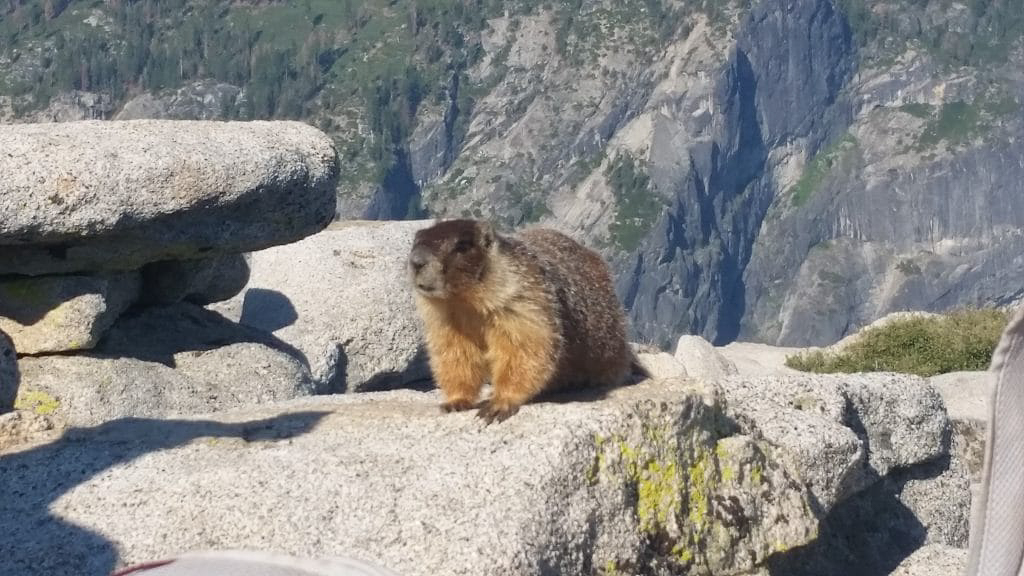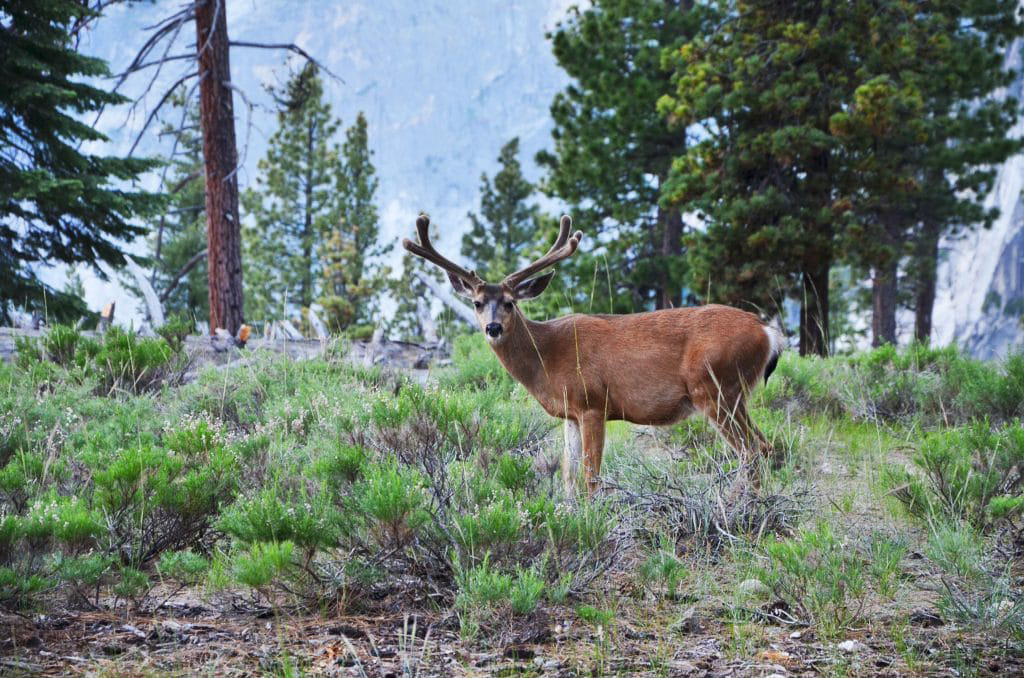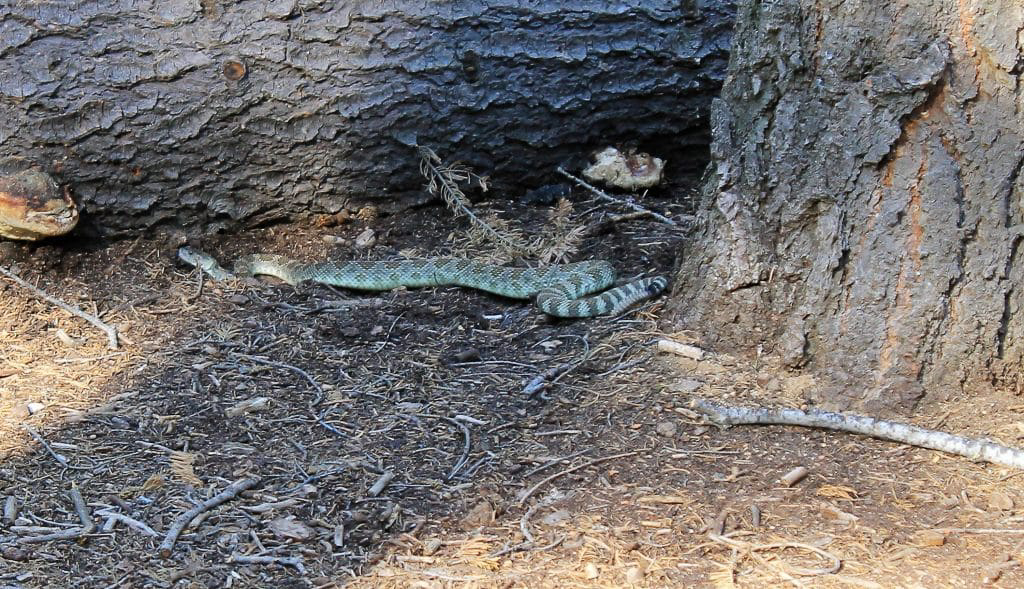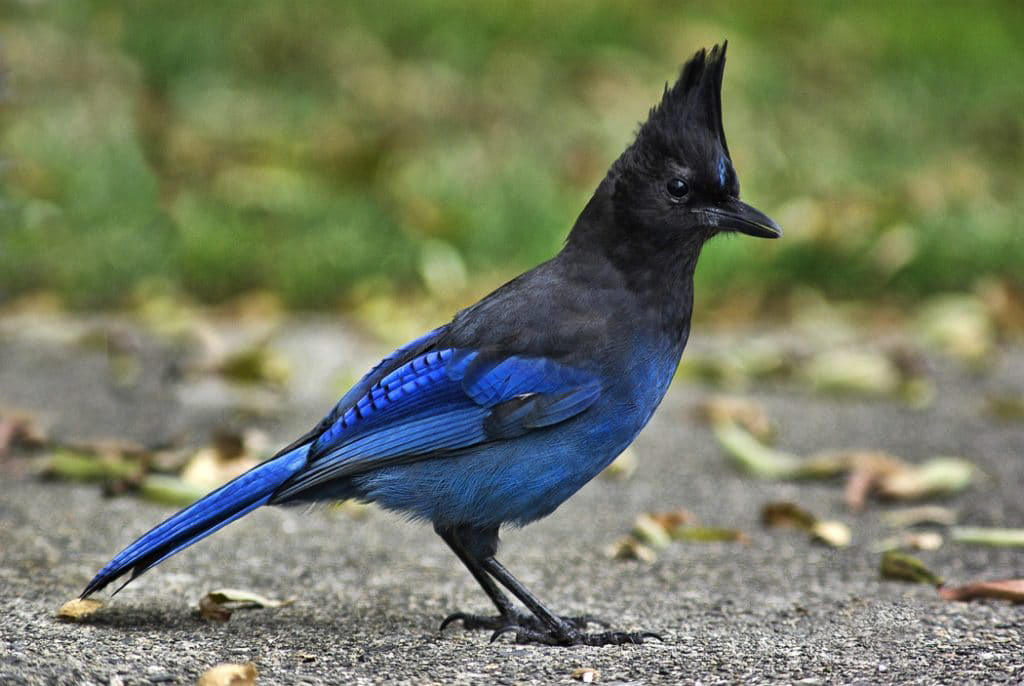Wildlife on a Yosemite Backpacking Trip: Should I Be Worried?
By: Juliet Ramirez & Scott Gehrman
I was recently on a wilderness backpacking trip with Lasting Adventures in Yosemite National Park that felt like it couldn’t get any better. I was saying a heartfelt goodbye to my fellow hikers when we saw something running through the nearby meadow. It was a bear! It was bouncing around in the green, springtime grasses. Its was so fluffy, it looked like it had just come out of the dryer. What seemed like a perfect day had just gotten even better.
Wildlife sightings in Yosemite are fairly common, and they are exciting. In Yosemite there are over 400 species ranging from amphibians, reptiles, birds and mammals. Most all are harmless and fun to spot in action such as the squirrels, birds, deer, and a variety of birds ranging from hummingbirds to hawks and eagles. But for many visitors that excitement comes with some pretty important questions- Is there any wildlife I should be concerned about? Should I be worried about wildlife if my child is going out on a backpacking trip? The short answer is no, not really. Aware, yes. Worried, no. There are rules to be followed when traveling in the backcountry. These rules involve viewing animals with an appropriate amount of space and storing food properly as to not allow them to consume human food. When these rules are followed, wildlife sightings are a treat, and not a scare.
Here is some information on a few of the animals that can be spotted in the backcountry.
Black Bears
Bears are an important part of Yosemite’s ecosystem. Though they present in a variety of colors, ranging from black to blonde, Yosemite’s bears are all black bears. Black bears are not aggressive in the ways that grizzly bears are, and they do not eat humans. They are instead naturally afraid of humans. In the past, black bears were fed human food to amuse tourists and keep them away from popular areas. Today’s bear management is very different. Bears are left to be wild. Human and bear encounters are limited, and visitors in Yosemite are asked to keep a good distance from bears and to properly store their food, as to not attract bears. This allows them to retain their natural fear of humans. This tactic is very successful.
What do we do if we see a bear in the backcountry? Number one is to realize what a great opportunity we have stumbled upon- witnessing one of the most charismatic mammals in the wilderness! At Lasting Adventures, we thoroughly educate all of our participants on what to do if we see a bear. If the bear is too close, we scare it off, and we, as humans, can do that very easily! We raise our arms, yell at the bear, and sometimes partake in a group, “Bear Dance.” Black bears only want our food. They do not want us. Therefore, we educate all of our participants on how to appropriately store our food. We use bear canisters and never leave food out. That way we can assure that we are not feeding the bears or attracting them to our campsites.

Marmots
Often in elevations of about 6,500’ and above, and on top of summits including Mt. Hoffman (10,850’), Clouds Rest (9,926’) and Half Dome (8.836’) we have close encounters with Yellow-bellied Marmots. These marmots are some of Yosemite’s biggest rodents and they live in and under the safety of granite rocks or other burrows. They are usually unafraid of humans and like the bears, will approach with the intent to find food. Marmots live in small colonies, so where there is one- there are probably more. Such is the case on top of Half Dome where there is a cute couple we often call Marvin and Martha Marmot! Marmots along with squirrels, chipmunks, squirrels and mice are some of the most common wildlife you will encounter when visiting Yosemite.

Mule Deer
The Yosemite Mule Deer is one of the most frequently seen animals in the park. The Mule Deer got its name for its distinctive ears that look much like the ears on mules. The male deers are called Bucks. They have antlers that shed each winter and a new set grows back in the spring. Many mule deer in the Yosemite valley are not afraid of humans. But you must remember that they are wild and they do scare easily. Sometimes getting too close to these timid creatures to get pictures have caused some to get scared and kick. So be sure to keep a safe distance even from these timid deer.

Northern Pacific Rattlesnake
Yosemite is home to at least 13 different species of snakes. Only the Northern Pacific Rattlesnake is venomous. Rattlesnakes are an important part to the Yosemite ecosystem that help control rodent populations. These snakes can grow to 2 to 5 feet in length and are often found under the cover of rocks, wood and logs. Although they are probably more afraid of you then you are of them, like any other animal; it is important to keep your distance from these poisonous snakes. Other non-venomous snakes in Yosemite include Kingsnakes, Gopher snakes, and the Garter snake.

Steller’s Jay
The Steller’s Jay is one of the most commonly sighted birds in Yosemite National Park. It can be identified by a few wonderfully charming traits. It has black feathers on its head that come to a point, similar to a mohawk haircut. It has a deep blue body, and the feathers on its back are striped black and blue. The Steller’s Jay is a fierce scavenger and often lingers in popular picnic areas or around folks sitting down for lunch. If you see a Stellar’s Jay, admire its feathers and safeguard your food! They love to steal your crumbs when you are not looking.

These are just a few of the many animals to be found in Yosemite. You can also find grey squirrels, coyote, western tanagers, snowshoe hare, and many others. Heading out on one of our Big Basin trips? Not to worry- Though the ecosystem is different, many of the same animals can be seen. (With some great additions, like the fabulous banana slug.) So remember to keep your eyes peeled out there! Animals are often all around us when we least expect it. Spotting wildlife is one of the great joys of being in the backcountry. When we take the time to observe quietly, we often see them in places where we never thought we would.

